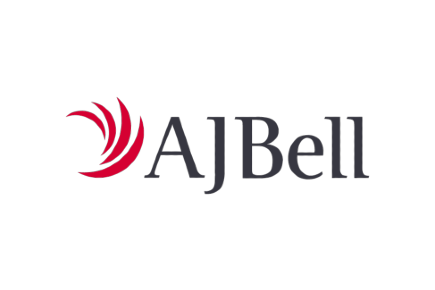A self-invested personal pension (SIPP) can be a great way to save for your retirement. There are lots of different providers out there each offering their own take on a SIPP, but what are the pros and cons of investing in SIPPs?
In this guide, I’ll tell you everything you need to know about SIPPs, from how they work, to key rules, to how to best benefit from using one. So, continue reading if you are considering saving in a SIPP but don’t know where to start.
Also consider: Best Pension Providers for Private Pensions
Key takeaways
- A SIPP is a type of personal pension that gives you a greater amount of control over how your money is invested.
- Contributions to your SIPP offer varying degrees of tax relief, depending on your marginal rate of Income Tax.
- You may face higher fees and charges with a SIPP compared to other types of personal pension.
- Once you reach age 55 (57 in 2028), you can withdraw a 25% lump sum totally tax-free from your pension. After this, you’ll usually pay tax on withdrawals.

- The benefits of investing in a SIPP
- The disadvantages of investing in a SIPP
- How exactly does a SIPP work?
- What are the rules for a SIPP?
- Are SIPPs good investments?
- Are SIPPs better than other types of personal pension?
- Can you lose money in a SIPP?
- Some of the top SIPP providers
- How long does it take to withdraw money from your pension FAQs
5 Best SIPP providers
The benefits of investing in a SIPP
A SIPP can be a great method for saving towards your retirement. Not only is it relatively tax-efficient, but it also gives you the opportunity to invest and potentially grow your pension savings.
Continue reading to discover the benefits of a SIPP.
You have greater control over how your money is invested with a SIPP
With a SIPP, you have a greater amount of control over how your money is invested.
With a standard personal pension, your money is typically invested for you by a fund manager.
Through a SIPP, you can choose the investments you make with your pension fund, including company shares, investment funds, and even commercial property like shops or offices.
While this does mean you may have to spend some time researching the different investment opportunities, the investment potential is almost endless with a SIPP.
There are a wide variety of investment options in a SIPP
As mentioned, you have a huge variety of different investment options with a SIPP.
Some of the instruments you can invest in include:
Company shares
As the name suggests, this involves purchasing shares in companies, meaning you own a stake in the business.
The value of these wholly depends on how the market is performing at the time, so it may be prudent to diversify your share purchases across different sectors to soften the blow should a specific sector or industry take a downturn.
Funds
If you aren’t as confident choosing company shares, or simply don’t have the time to worry about doing so, you can instead invest in funds.
This involves giving your money to a specialist fund manager who then invests in shares for you.
Exchange-traded funds (ETFs)
ETFs are another type of pooled investment much like funds. Unlike other funds, however, ETFs typically track a particular index or commodity, such as the FTSE or gold.
They are purchased in the same way shares are and could potentially be more suited for those looking to invest for the long term.
Property
You can also invest in commercial property with a SIPP. For example, many business owners choose to buy their own commercial premises using their SIPP.
Once the property is held in a SIPP, any rent due will also be paid into the SIPP, helping to boost your retirement fund.
Alternatively, you could buy units in investment vehicles that focus on property, such as real estate investment trusts (REITs).
Remember:
You should keep in mind that the value of your investments can fall as well as rise, so you may get back less than you invested. You should also be prepared for any volatility or short-term changes in value.
Investing money in a SIPP is tax-efficient
Any returns you make from investments in your SIPP are protected from Capital Gains Tax (CGT) and Income Tax. You will only need to pay Income Tax on withdrawals made above your 25% lump sum – this makes them a tax-efficient way to save for your retirement.
Better yet, any contributions you make will qualify for tax relief at your marginal rate of Income Tax. This means a £100 contribution only “costs” you:
- £80 if you pay basic-rate Income Tax.
- £60 if you pay higher-rate Income Tax
- £55 if you pay additional-rate Income Tax.
You’ll need to claim higher- or additional-rate tax relief through a self-assessment tax return.
You can consolidate your pension savings in a SIPP
A SIPP is also a great way to consolidate your existing pensions under one roof.
Not only will consolidating your pensions make them less of a headache to deal with, but you may also be able to reduce the charges and fees you need to pay.
By switching to a pension plan with a better deal or set of investment options, you could even boost your retirement income in the long term through smart investments or better rates.
The disadvantages of investing in a SIPP
Even though SIPPs can be a great way to save toward your retirement, they do come with some downsides that you should keep in mind before contributing to one.
Read on to find out more about some of these disadvantages.
You need to know what you’re doing
As mentioned, SIPPs give you access to a wide variety of choices when it comes to investments. This is a double-edged sword, however, as you will be responsible for making all your own investment choices.
If you were to make some poor investments due to a lack of knowledge or research, for example, there is a chance your fund will not grow to the level you need to achieve your desired retirement lifestyle.
The good news is, however, that some SIPP providers may offer to manage your investments for you, though this may come with additional charges.
You may face additional costs or charges
There are quite a few different potential costs or charges you may face when using a SIPP. You should shop around when looking for SIPP providers, as some may offer a low-cost SIPP that has lower fees and charges.
Of course, these may vary between providers, so it may be worth finding these out before opening an account.
Some of these fees may include:
Platform fees
Some SIPP providers may charge you simply for using their platform. This may come in the form of a monthly, quarterly, or yearly flat fee, or a percentage of your investments.
Share trading charges
Some SIPP providers may also charge you for trading company shares or investment funds.
This is typically presented as a percentage of the amount you invest in a company or fund. Again though, some providers may have differing fee structures, so you should double-check this before you invest.
Fund manager charges
If you would prefer to steer clear of company shares and instead invest in funds, there’s a chance you may have to pay a management charge.
This is understandable, as these fund managers are handling your money for you. Again, this will usually be a percentage of the amount you have invested in them.
Your investments could lose value
As with all types of investing, there is a chance your investments could decrease in value.
Of course, there are ways to limit potential loss, such as diversifying your portfolio or doing proper research before you invest, but sometimes there’s inevitable loss.
Take Covid, for example – it would have been difficult to predict an event that would have such negative effects on the global markets, regardless of industry or sector.
Market downturns like this could have a severe impact on your retirement savings, potentially affecting the lifestyle you can afford.
There is a limit on tax relief and tax on withdrawals
As mentioned previously, contributions made to your SIPP receive tax relief. However, this tax relief is only applied up to the pension Annual Allowance. In the 2022/23 tax year, this is up to £40,000 or 100% of your earnings, whichever is lower.
Fast forward to age 55 (57 by 2028), and the good news is that you can withdraw 25% of your pension as a tax-free lump sum. The bad news is that this is the only time you can make a tax-free withdrawal throughout your life.
After you have withdrawn your 25% tax-free lump sum, you will typically be subject to Income Tax on withdrawals from your pension fund that exceed your yearly Personal Allowance.
In the 2022/23 tax year, your Personal Allowance stands at £12,570.
Once you have reached your Personal Allowance, you will typically pay tax on withdrawals depending on your Income Tax band.
The pension Lifetime Allowance
There is also a pension Lifetime Allowance (LTA), which puts a limit on the total amount you can save in all your pensions including a SIPP over your life while still reaping the benefits of the tax efficiency.
As of the 2022/23 tax year, this Lifetime Allowance stands at £1,073,100 and has been frozen at this amount until 2025/26.
While you can go over your LTA, you will typically pay tax on the excess. If you do go over your Lifetime Allowance, you can withdraw the excess as a lump sum, though you will pay a tax charge of 55%.
Meanwhile, drawing income that exceeds the LTA will incur a 25% tax charge on top of your marginal rate of Income Tax.
How exactly does a SIPP work?
A SIPP, standing for “self-invested personal pension” is a pension that gives you a larger amount of flexibility and control over how your money is invested and how much you contribute. It is for this reason that you may see a SIPP being described as a “DIY pension”.
A SIPP is also completely separate from your existing State Pension and can be contributed to alongside a workplace pension.
Bear in mind that your Annual Allowance applies to all pensions you have.
You can even use a SIPP to replace a workplace pension altogether by asking your employer to pay into your SIPP instead of your workplace pension.
Ask your employer if they would be willing to contribute to your SIPP instead if this is something you’re interested in.
What are the rules for a SIPP?
Anyone under the age of 75 can contribute to a SIPP.
As with other types of pensions, you will need to wait until you reach the age of 55 before you can withdraw money from your pension without facing a tax charge of 55%. This minimum withdrawal age is set to rise to 57 in 2028.
How much do SIPP providers charge?
As mentioned previously in this article, SIPP providers charge a range of different fees.
However, depending on the provider, the fee structure can often vary.
For example, some providers may charge you a fixed flat monthly or yearly platform fee for using their SIPP, whereas some providers may charge you a percentage of your held assets and savings.
It is for this reason you should shop around for the different pension plans on offer to compare and find out which one would best suit your needs.
Read my article on some of the best SIPP providers if you would like to discover some of the different plans on offer.
Can a non-UK resident open a SIPP?
Unfortunately, if you are not a UK resident, you won’t be able to open a SIPP. This is because you need a UK address in order to open one.
There is, however, the option of an international SIPP. This operates much like a UK-based SIPP except you can open it as an expat.
You should keep in mind that, unlike their UK-based counterparts, international SIPPs aren’t regulated by the Financial Conduct Authority (FCA).
Are SIPPs good investments?
A SIPP has the potential to be a good investment, depending on your reasons for investing in the first place.
For example, if you want to invest to turn a quick profit, or you want to grow your savings in order to make a milestone purchase such as a house, a SIPP may not be the best choice for you.
As far as saving for your retirement, however, a SIPP can be an effective way to invest for your future. The huge variety of investment decisions SIPPs offer you mean that you can really diversify and try to spread risk.
Of course, the SIPP in itself isn’t an actual investment, but rather a “wrapper” in which you hold your different investments.
How do I choose an investment for my SIPP?
Before investing in anything through your SIPP, you should first do some research. This could involve reading a company’s historic performance, keeping up with industry news, reading share tips, or seeing how other people are investing.
If you would prefer a longer-term investment with lower risk but less reward, you might want to consider investing in an ETF that tracks a specific index, such as the FTSE 100.
This way, you can invest in a single basket of investments at once, rather than selecting individual ones.
Are SIPPs better than other types of personal pension?
There are some slight differences between SIPPs and other personal pensions.
With a personal pension, for example, you’ll likely have less control over how your money is invested. You may be able to influence the investment decisions, such as picking a particular fund or plan, but overall, the pension provider will typically manage the investing.
You may find fees and charges may be slightly lower in a standard personal pension too, though both types benefit from the same tax-efficiency and tax relief on contributions.
This means that, if you’re more experienced in investing and know how to make investment decisions, a SIPP may be better for you. Otherwise, you may want to consider another type of personal pension.
Can you lose money in a SIPP?
Since you are making your own investments with a SIPP, there is always the chance that these will fall as well as rise in value.
Unfortunately, there is no protection against loss of investment value in a SIPP. It is for this reason that you should properly research a company before you invest, make long-term investments, or properly diversify your portfolio to try and limit losses if markets take a downturn.
Is money held in a SIPP protected?
Luckily, your money held in a SIPP is quite well protected. As mentioned, many SIPP providers are regulated by the Financial Conduct Authority (FCA).
They are also generally covered by the Financial Services Compensation Scheme (FSCS), which protects your money in the event that a provider is unable to pay out to you, such as if they fail.
Even better, investments in your SIPP are “ring-fenced” from the SIPP provider, meaning if the provider fails, your investments are safe.
Make sure you choose a firm that’s regulated by the FCA and covered under the FSCS.
What is a SIPP scandal?
One thing you should keep an eye out for is the SIPP mis-selling scandal.
This is when people are targeted by cold callers and are then sold high-risk pension schemes. What they usually don’t know, however, is that these schemes are usually unregulated.
Some people may also be given wrongful pension transfer advice, usually from a financial adviser or a pension provider, to try and get customers to make high-risk and unregulated investments.
In fact, according to The Times, the problem was so bad at one point that the FSCS reportedly paid out £695 million for SIPP-related claims.
Some of the top SIPP providers
PensionBee
- Finds and consolidates all existing pensions for you
- Provides a low cost solution to all your pension needs
- No fees for transferring, combining, contributing to and withdrawing pensions
Read my PensionBee Review
interactive investor
- SIPP costs £12.99 a month
- Free to join and free to leave
- Trading costs: £7.99 for UK shares and ETFs, funds, investment trusts and US shares
Read my ii Review
AJ Bell
- Pensions Options: DIY & Ready-made
- Annual Fee: 0% – 0.25%
- Min. Investment: £1,000 lump-sum. No minimum for regular pension contributions
Read my AJ Bell Review
How long does it take to withdraw money from your pension FAQs
Is a SIPP a good idea?
Are SIPPs safe?
SIPPs are generally quite safe – as mentioned, many providers are regulated by the FCA and your money is typically protected by the FSCS up to the value of £85,000.
One thing you should look out for is pension mis-selling, which involves being given bad advice about unregulated high-risk investments.
Which SIPP provider is best?
The best SIPP provider for you depends on how you plan on saving and investing. Since different providers have different fee structures, you may want to shop around for different deals.
For example, some may charge a monthly or annual fee based on how much you have invested. If you are planning on investing large amounts of money, you may want to consider a pension provider that charges a fixed flat fee instead.
Read my guide on some of the best pension providers if you want to find out more.
Please note
A pension is a long-term investment. The fund value may fluctuate and can go down, which would have an impact on the level of pension benefits available. Your pension income could also be affected by the interest rates at the time you take your benefits. The tax implications of pension pot withdrawals will be based on your individual circumstances, tax legislation and regulation, which are subject to change in the future.




